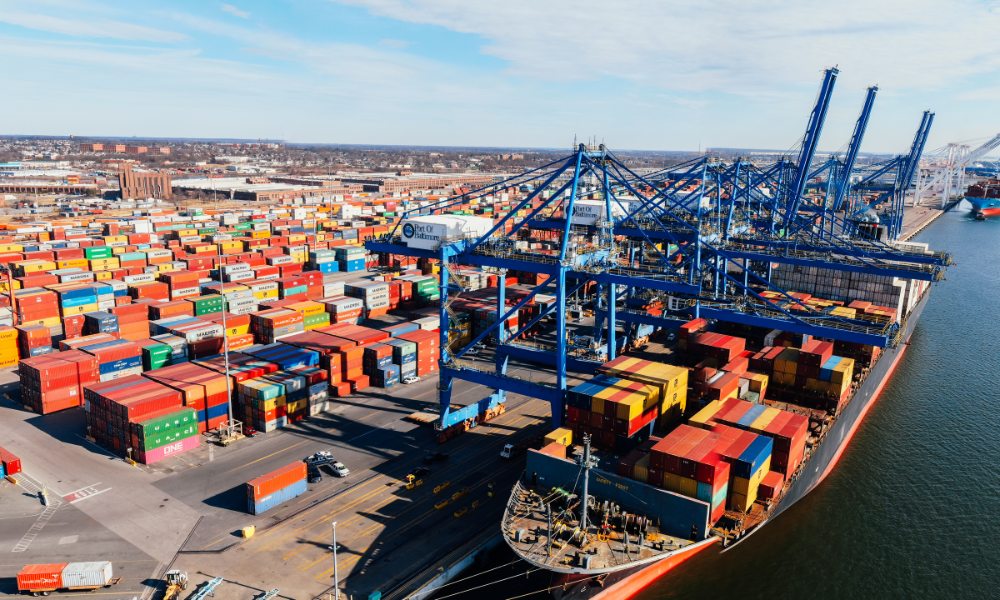As global trade dynamics evolve, it’s crucial for businesses to stay aware of port developments. First, it was closures on the West Coast, specifically at the ports of Los Angeles and Long Beach. Now, though, the challenges have shifted to the other side of the US, as reflected in some issues happening along the Gulf of Mexico and the Eastern seaboard. Our Gulf Coast and East Coast ports update shares some of the trends we’re seeing and what the future may hold.
Positives Happening in the Gulf Coast and East Coast: Growth and Strength
While the Port of Los Angeles still tops the list for number of 20-foot cargo containers that are unloaded for shipment across the US and beyond, East Coast ports have become key players in international trade in recent years. Scotsman Guide reports that significant investments in infrastructure, combined with port expansions, have increased capacity and efficiency. This is true in Savannah, Charleston, New York, and New Jersey, all of which have experienced substantial growth. And that growth is attracting larger vessels, making the East Coast a contender and true competitor to the West Coast.
Expansion Projects and Capacity Enhancements
A proactive approach to expanding facilities and upgrading infrastructure enables East Coast ports to accommodate growing trade volumes. From dredging projects to the construction of new container terminals, these investments aim to enhance the competitiveness and efficiency of East Coast ports. This, in addition to improved rail and road connectivity, contributes to seamless cargo movement inland, offering businesses greater accessibility to key markets.
Potential Challenges on the Horizon
While the growth potential for East Coast ports is evident, nothing ever seems to move smoothly in the world of global shipping. CNBC reports that recent labor disputes and supply chain disruptions could result in a potential strike at Gulf Coast and East Coast ports. As we’ve seen previously, port disruptions can lead to delays, congestion, and increased costs. All this underlines how important contingency planning and diversification of supply chain routes are when your business relies on shipping.
Labor Uncertainty and Mitigation Strategies
The six-year contract between the International Longshoremen’s Association and the US Maritime Alliance ends September 31, and May 17 has been set as the cutoff date for local contracts to be completed. Once that occurs, a master contract can be negotiated. If talks stall or contracts aren’t agreed upon, strikes will threaten, posing a risk to port operations and global supply chains. Businesses that rely on ports must continually be monitoring the situation and have alternative plans at the ready should the need arise.
Gulf Coast Ports: Navigating Opportunities and Challenges
While East Coast ports represent main entry points for Europe, Africa, and the Middle East, Gulf Coast ports are just as vital to international trade with Latin America. The ports of Houston, New Orleans, and Mobile play a crucial role in facilitating trade due to their strategic locations and access to major inland markets.
Infrastructure Investments and Growth Potential
Just as East Coast ports have started to upgrade, Gulf Coast ports are taking similar actions. The goal is the same: to accommodate larger vessels and handle increased cargo volumes. The expansion of the Panama Canal and the rise of containerized shipping have further boosted the region’s trade prospects, attracting investments in port infrastructure and logistics facilities.
Environmental and Regulatory Considerations
While the opportunities for growth abound, Gulf Coast ports also face environmental and regulatory challenges. As concerns over climate change and environmental sustainability mount, ports around the globe must navigate stricter regulations and mitigate their environmental impact. Sustainable practices, such as shore power facilities and emissions reduction initiatives, are becoming increasingly important for Gulf Coast ports to remain competitive and environmentally responsible.
Trust Cyclone Shipping to Navigate the Shipping Landscape
The global shipping industry is dynamic, and Gulf Coast and East Coast ports play a critical role in facilitating trade. While ports continue to strengthen their position through expansion and investments, challenges such as labor disputes underscore the importance of risk management and contingency planning. They must also address environmental concerns and regulatory requirements to sustain long-term competitiveness.
As businesses navigate the complexities of the shipping landscape, staying informed and proactive is essential. By monitoring port developments, assessing risks, and implementing robust supply chain strategies, businesses can effectively navigate the challenges and capitalize on opportunities in the ever-evolving world of international trade.
Trust Cyclone Shipping to be your source of information in the world of global shipping. As your trusted freight forwarder, we always have multiple contingency plans to ensure your shipments make their way to their destinations. Contact us to learn more about how we can help.




